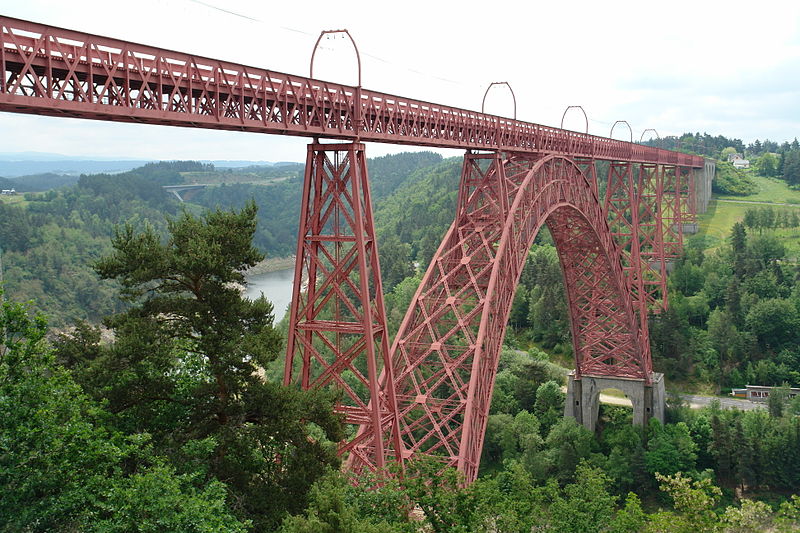Garabit viaduct


Facts and practical information
The Garabit Viaduct is a marvel of 19th-century engineering, gracefully arching over the Truyère River in southern France. Completed in 1884, this wrought iron railway bridge was designed by Gustave Eiffel, the same mastermind behind the iconic Eiffel Tower in Paris. The viaduct stands as a testament to the industrial era's bold architectural ambitions and Eiffel's innovative spirit.
Spanning 565 meters in length and soaring 122 meters above the river, the Garabit Viaduct was the world's highest bridge at the time of its completion. Its red-painted structure, comprising of a series of arches supporting a slender deck, was an exceptional feat, pushing the boundaries of the materials and construction techniques of the day.
The bridge's elegant form not only serves a functional purpose, allowing trains to cross the rugged terrain, but it also blends seamlessly with the picturesque landscape, attracting tourists and engineering enthusiasts alike. Despite its age, the viaduct remains in active use, a testament to the durability of Eiffel's design.
Garabit viaduct – popular in the area (distance from the attraction)
Nearby attractions include: Château d'Alleuze, Saint-Flour Cathedral, Lac de Grandval, St. Vincent Church.







